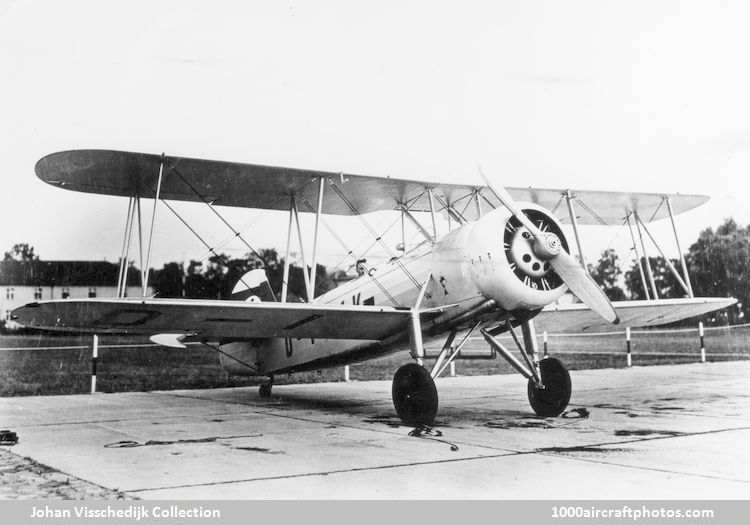His choice was on the Walter Pollux II nine-cylinder air-cooled radial engine of 400 hp, which needed to re-shape the nose, design a new engine cowling, and finally, the complete fuselage was also upgraded. The type flew for the first time on June 24, 1936, and an order from the Ministry of National Defense for 95 examples followed soon.
The Praga E.241 became a very popular training aircraft and several served in Czechoslovakia until the end of WW II."
Type: Two-seat advanced training biplane.
Wings: Unequal-span two-bay biplane. Top planes attached to a small-metal center section, which also holds a gravity petrol tank. Bottom planes, which are of greater span than the top, attached direct to the bottom longerons of the fuselage. Top center section carried above the fuselage by N-type struts, and there are two sets of N-type interplane struts on either side of the fuselage. Wing structure is of wood with fabric covering. Spars of box type with plywood webs. Ribs are of I-section with plywood webs. Drag bracing is by steel tubes and steel tie-rods. The leading edge is covered with plywood back to the front spar. Ailerons, which are on bottom planes only, have small auxiliary balance planes carried above and in front of hinge line on forwardly-inclined posts.
Fuselage: Rectangular structure of welded steel tubes, rigidly-braced forward and wire-braced aft. Except for the engine cowling, the fuselage is faired with spruce stringers and covered with fabric.
Tail unit: Normal monoplane type. Adjustable tail plane is of wood construction, with plywood covering. Elevators, fin and rudder have welded steel-tube frames and are covered with fabric. The elevators are balanced with small auxiliary surfaces.
Landing gear: Split type. Consists of two oleo-pneumatic shock-absorber legs, the upper ends of which are attached at braced points on the leading edge of the lower wings, with the lower ends hinged to the underside of the fuselage by steel tube axle and radius-rod. Wheel brakes. Sprung tail-skid with oleo-pneumatic dampers.
Power plant: A 400 hp Walter Pollux II nine-cylinder air-cooled radial engine on welded steel-tube mounting. NACA type cowling. Main fuel tank in fuselage with gravity tank in upper center section. Carburetor fed from both tanks by a Jumo pump through flexible hose. Air-cooled oil tank in fuselage deck. Detachable oil-filter and compressed-air starting device fitted.
Accommodation: Tandem open cockpits aft of the wings. Complete dual control, and pupil's controls may be disconnected by instructor from front cockpit. Both seats are adjustable for height.
